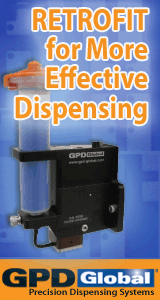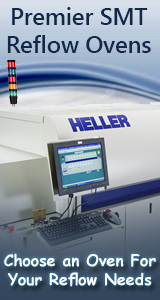One of the most successful energy management tools ever used in HVAC (Heating, Ventilating and Air Conditioning) systems of buildings is the Variable Frequency Drive (VFD).
Over the past 20 years, VFD has been successfully installed on fan and pump motors in a variety of variable load applications. The saved energy is up to 35% to 50% compared with using traditional constant-speed applications. And the investment return period is 6 months to 2 years.

Figure 1: 3D model of the HVAC system in a house.
The early appliances using VFDs were limited because of the power limit of motors, but today VFDs can be installed in any HVAC appliances in commercial and residential buildings. New VFDs can be operated at higher voltages than those of previous generations, providing ready and stable, and variable power supply for motors up to 500 horsepower.
Previously, VFD also suffered from low power, which can disrupt distribution capacitor facilities and may cause power company to impose cost penalties. Now, VFDs can operate with an almost constant power over the entire speed range of the motor.
Another problem of operational noise has been corrected too. As the output frequency of the drive decreases in response to the load, the noise of the vibration caused by the lamination of the motor can easily be transmitted through the motor to the interior space of the building. But now the drive is functioning at higher frequencies, making the operational noise above audible range of human being. That’s just an example. And VFDs are evolving continuously.
From various advantages of VFDs to an increasing number of available appliances, VFDs are proved to be even more useful and powerful.
1. Key Features of VFD
Most traditional buildings use HVAC system to operate fans and pumps at a constant speed. However, the load of the building is constant. In the traditional system, some type of mechanical throttle system can be used to reduce the amount of water or air flow. And the drive motor continues to run at full speed, using nearly the same amount of energy, regardless of the heating or cooling load in the system.
Although mechanical throttle system can provide good control, it is not very efficient. VFD becomes an effective and efficient alternative.
The operational efficiency of VFD is enhanced by the coordination and cooperation of three factors.

Figure 2: Lenze Frequency Converter VFD E82DV222K2C
1.1 Operation Below Full Load
HVAC systems of buildings are designed for peak load conditions. For typical appliances, peak load conditions take up only 1% to 5% among the whole annual operating hours. This means that the pump and fan motors used more energy than 95% to 99% of their operating time.
1.2 Overloaded System Design
Peak load design will make HVAC system consume too much energy in most working hours. This situation is further aggravated by the practice of excessive load design. Within the scope of normal operation of HVAC equipment, its power system also allows for underrated and unexpected load conditions, as well as unknown loads that may be caused by different uses of building space.
1.3 Energy Consumption of Motor is a Function of Speed
Induction motor is the most commonly used motor in building HVAC system. For induction motors, its power consumption changes with the cube number of the motor speed. This means that if the motor can slow down its normal running speed by 25%, its energy consumption will be reduced by nearly 60%. If the motor speed is reduced by 50%, and energy consumption will be reduced by nearly 90%.
In the application of HVAC, the installation of VFD With the decrease of the system load, the VFD controller will reduce the running speed of the motor, so as to meet the flow through the system but not exceed the load requirements.
Installing a VFD in an HVAC appliance solves the low efficiency caused by the first two factors, and saves energy because of the third factor. VFD achieves this goal by converting 60 circulating line currents into DC, and then outputting the voltage and frequency changes according to the load in the system. As the system load decreases, the controller of VFD reduces the motor speed to meet but not exceed the requirements of the load through the system flow.

Figure 3: Fuji VFD models
2. Advantages of VFD
The most important advantage of using VFD is energy saving. By matching the system capacity with the actual load in the whole year, the goal of saving the energy consumption of the HVAC system motor is achieved.
Another benefit is reduced wear of the motor. When an induction motor is started, it consumes a higher current than when it normally operates. This current surge can be three to ten times the full operating current of the motor, creating heat and stress in the motor windings and other components. The frequent starts and stops will lead to early failure of the motor.
In contrast, if the motor is connected to a VFD, it will be applied extremely low frequency and low voltage. Both the two devices are gradually going normal at a controlled rate, thus extending motor's service life.
The VFD also provides a more precise control of the appliance. For example, high-rise buildings use booster pump systems for domestic water to maintain adequate water pressure at all levels of the building. This makes conventional pump control keep pressure within a range, but the VFD can maintain more precise control over a wider range of flow rates while reducing energy requirements and pump wear.
The three-phase induction motor is most commonly used in building HVAC applications, some smaller applications may use a single-phase induction motor though. Both the two can be installed with VFDs.
While the VFD controller can be used in lots of fields, it's applications requiring variable speed that get the most benefit. For example, use the VFD to vary the flow rate. The pump used to build the HVAC system can produce a flow rate that matches the building load. Similarly, in systems where constant pressure is required regardless of flow rate, such as in domestic hot and cold water systems, a VFD controlled by a pressure set point can maintain pressure at most required levels.

Figure 4: Sketch of wire and switches in a VFD
Most commercial and public HVAC systems use variable air volume fan systems to distribute the conditioned air, and they are mostly controlled by variable inlet vanes and variable air volume boxes in the fan system. As the load decreases, the variable air volume box is closed, increasing the static pressure in the system. The fan's controller detects this increase and then closes its inlet blades. While using this type of control system will reduce the system fan energy requirements, it is not as efficient or accurate as systems with VFD.
VFD can also be used in variable refrigerant flow systems. The system connects one or more compressors to a common refrigerant supply system that feeds multiple evaporators. Use the refrigerant instead of air piping, and the distribution of energy needs is greatly reduced.
Because of the constant change of load on the compressor depending on the evaporator's demand, the VFD is used to control the compressor speed to match the load, thereby reducing the energy demand under partially loaded conditions.
3. Other Appliances
Even though the benefit of VFD mentioned above is only about energy saving, it is well suited for other appliances that energy saving is of secondary importance. For example, the VFD can control precise speed or torque in some commercial appliances. Some specialized use as dual fans or pumps, both the two units of which can be operated at the required speed because of precise speed control of the VFD.
Advances in technology have increased the amount of load a unit can drive. Today, the voltage and current ratings can be matched with three-phase induction motors in most buildings. There are units of 500 horsepower or more that personnel can install on high-capacity centrifugal chiller units to save energy significantly.

Figure 5: Delta Frequency Converter VFD DPD024K4EA-21
One of the most significant changes that has occurred recently is that the VFD control has been a must in their systems in many appliances by different manufacturers, with widespread acceptance and recognition. For example, manufacturers of centrifugal chillers offer VFD control as an option for their multiple units.
Similarly, manufacturers of domestic water booster pump systems also offer controls as part of their systems, providing users with better control strategies while reducing energy and maintenance costs.
4. Cautions
When evaluating the installation of a VFD, facility managers should consider a number of factors related to application details. For example, if the VFD emits a series of rapidly switching pulses. These pulses can be reflected from the motor terminals back to the cable connecting the VFD to the motor.
For appliances running with long distances between the motor and the VFD, these reflected pulses can generate voltages in excess of the line voltage, thus causing stresses in the cable and motor windings that can lead to insulation failure. While this hardly affects motors operating at 230 volts or lower, it is a problem for motors operating at 480 volts or higher. So minimize the distance between the VFD and the motor by using cables specifically designed for VFD.
In addition, a VFD may have an effect on motor bearings. The pulse generated by the VFD can create a voltage difference between the motor shaft and its housing. If this voltage is high enough, there can be sparks corroding the bearings, and eroding their surfaces. It can be avoided by using cables.
Learn More about What is HVAC Engineering
HVAC (Heating, Ventilating and Air Conditioning) represents not only the subject and technology, but also the industry and fields involved in them. With heat transfer, engineering thermodynamics and fluid mechanics as its basic theories, the research and development direction of HVAC engineering is to provide more comfortable working and living environment for human beings.
If you are interested in the industry of HVAC and what you can do in it, feel free to learn more about HVAC engineering from our partner article here:
https://mechanicalengineeringhq.com/what-is-hvac-engineering/
Next →






